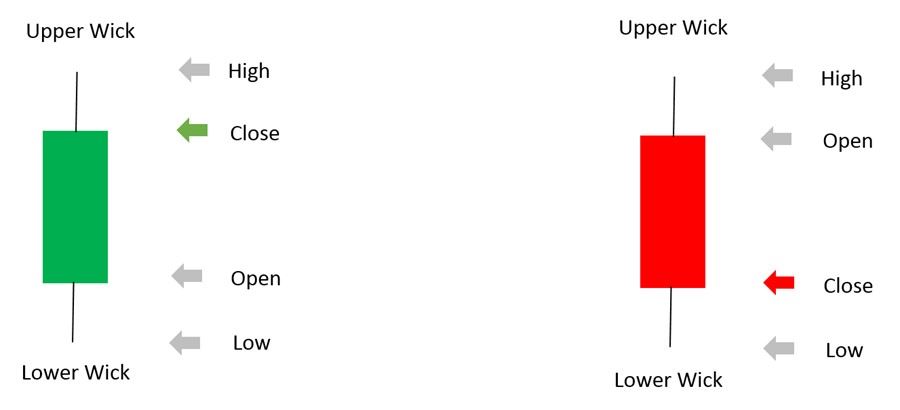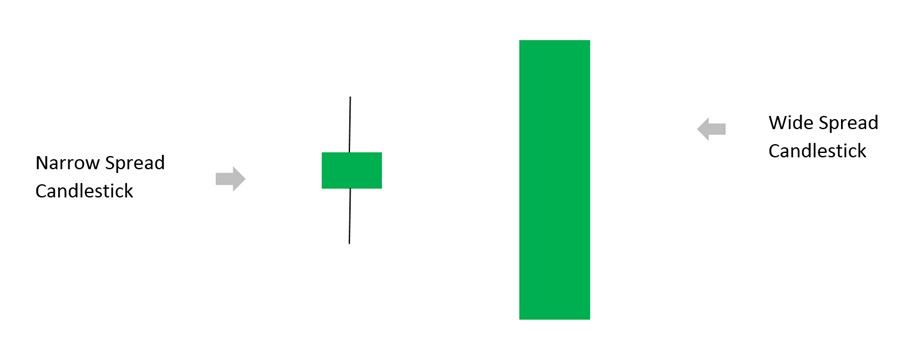The key elements of Japanese Candlesticks
A Japanese candlestick consists of four main elements:
-
Opening price
-
Highest point reached by the asset’s price
-
Lowest point reached by the asset’s price
-
Closing price of the candle

As seen in the photo above, the four elements create two parts of the candle: the wick (extending up and down) and the body that consists of the opening and closing prices. The wick can be long or short, depending on the price movements.
As such, candlesticks differ from the simple bar charts by displaying more information, but in such a way that they are still easy to read.

Traders usually use either green (bullish) or red (bearish) colour to paint the candlestick, although some also use white (bullish) and black (bearish) as well.
-and-red-(bearish)-colors-pic-4.jpg.aspx)
As seen in the photo above, the bullish candle is formed when the close is higher than the open, and the opposite is the case for the bearish candle. There is a wide range of different shapes, from those with long wicks to either side to those with almost no body.
The top of the upper wick shows the session’s high and vice versa. The longer the distance between the high and the low, the wider the price range of the given session is.
You can test how different Japanese candlestick patterns work by trading without risking your capital first, by opening a demo trading account.